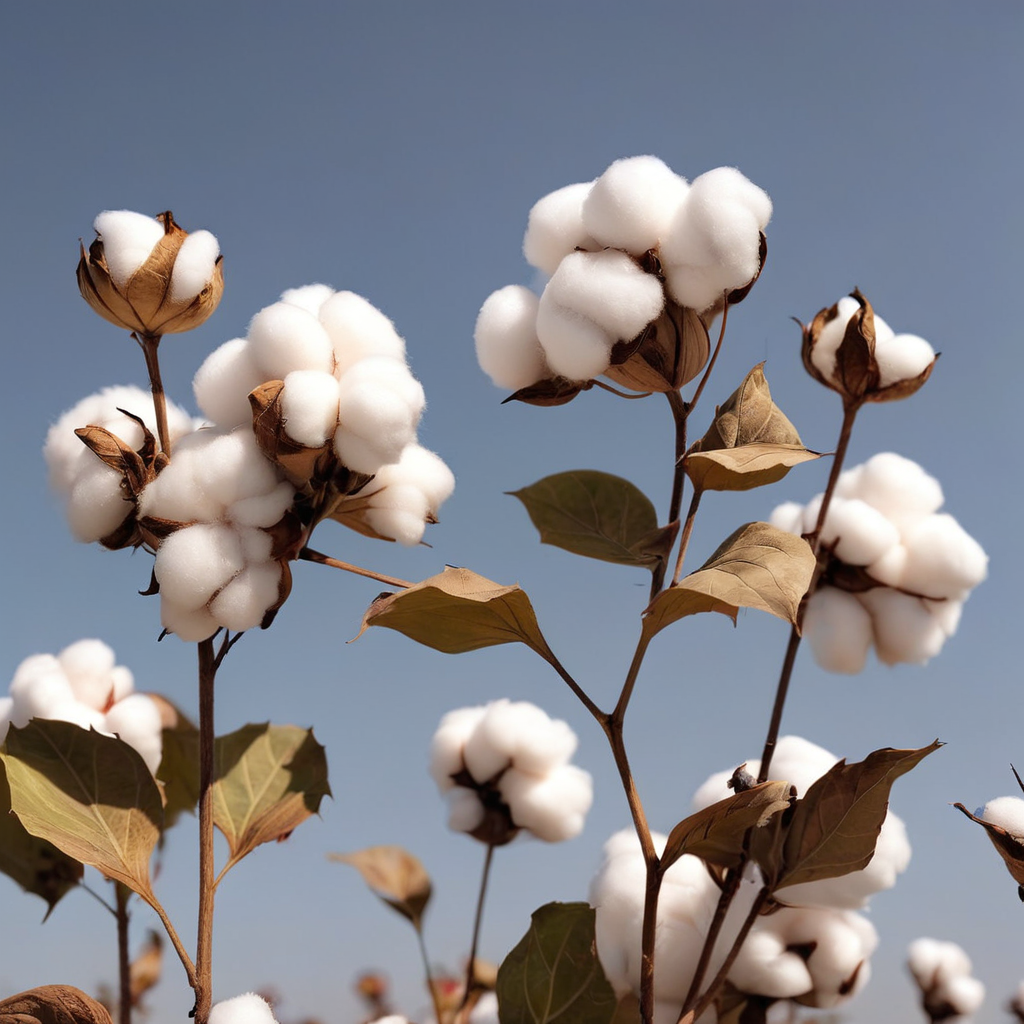What is BT Cotton?

Bt cotton refers to a genetically modified variety of cotton that has been altered to include a gene from the bacterium Bacillus thuringiensis (Bt). This bacterium naturally produces a protein toxic to certain insects, particularly those that are harmful to crops like cotton.
These plants have altered gene and due to this these known as genetically modified organisms.
History
Discovery of Bacillus thuringiensis (Bt) toxin: Bt is a soil bacterium that naturally produces proteins toxic to certain insects. This discovery laid the foundation for the development of insect-resistant crops.
Development of Bt technology: In the 1980s, scientists began exploring ways to incorporate genes from Bt into plants to confer resistance to insect pests. This involved isolating the specific genes responsible for producing insecticidal proteins.
Development of Bt cotton: In the early 1990s, researchers successfully inserted Bt genes into cotton plants. This genetic modification allowed the cotton plants to produce Bt toxins that are harmful to pests like the cotton bollworm (Helicoverpa armigera).
Types
There are several types or varieties that have been developed over time, each with different characteristics and traits:
MON 531/Bollgard: This was one of the first commercially successful Bt cotton varieties developed by Monsanto (now Bayer) in collaboration with other partners. It produces a Bt toxin specifically targeting lepidopteran pests such as the cotton bollworm (Helicoverpa armigera) and pink bollworm (Pectinophora gossypiella).

MON 15985/Bollgard II: This is an improved version of Bollgard, also developed by Monsanto. It provides enhanced protection against a broader spectrum of lepidopteran pests, including those that were developing resistance to the original Bollgard technology.
Ingard: Developed by CSIRO (Commonwealth Scientific and Industrial Research Organisation) in Australia, Ingard cotton also incorporates a Bt gene from Bacillus thuringiensis. It targets similar pests as Bollgard but was specifically developed for Australian conditions.
Bollgard III: This is a newer generation Bt cotton developed by Monsanto (now Bayer), which combines multiple Bt toxins to provide protection against a wider range of pests, including certain coleopteran pests in addition to lepidopterans.
Cry1Ac+Cry2Ab cotton: Some varieties of Bt cotton may combine different Bt toxins, such as Cry1Ac and Cry2Ab, to enhance efficacy and delay the development of pest resistance.
Stacked Bt cotton: Stacked varieties refer to Bt cotton plants that contain multiple Bt genes targeting different pests. For example, some varieties may combine genes targeting lepidopteran pests with genes targeting coleopteran pests like the cotton boll weevil.
Mechanism of toxin
Production of Bt toxin: Bt bacteria naturally produce crystalline protein toxins during their sporulation phase. These toxins are encoded by genes within the bacterial genome.

Incorporation into Bt crops: In agricultural biotechnology, scientists have isolated and inserted specific genes encoding these Bt toxins into the DNA of crop plants like cotton (Bt cotton). This genetic modification allows the crop to produce its own insecticidal proteins.
Mode of action: When insect pests such as caterpillars (e.g., cotton bollworm) or certain beetles ingest parts of the Bt plant (e.g., leaves, buds), the Bt toxin proteins are released into their digestive tract.
Interaction with insect gut: The Bt toxins specifically bind to receptors in the insect’s midgut (digestive system), which are present in susceptible insect species but absent or different in non-target organisms like mammals, birds, and most beneficial insects.

Disruption of gut cells: Once bound to the receptors, the Bt toxins create pores or holes in the cells lining the insect’s gut. This disrupts the integrity of the gut epithelium, leading to leakage of gut contents and eventually causing the insect to stop feeding.
Lethal effects: The disruption of the gut cells can lead to paralysis, starvation, and death of the insect within a few days after ingestion of the Bt toxin. The mode of action is specific to insects that have the receptors targeted by the Bt toxin, thus minimizing harm to non-target organisms.
Advantages
Effective pest control: Bt cotton is specifically engineered to target and control major pests like the cotton bollworm (Helicoverpa armigera) and pink bollworm (Pectinophora gossypiella). These pests can cause significant damage to cotton crops, leading to yield losses. By producing its own insecticidal proteins, Bt cotton reduces the need for synthetic chemical insecticides, which can be harmful to human health, beneficial insects, and the environment.

Reduced pesticide use: Farmers who plant Bt cotton typically use fewer chemical insecticides because the crop itself produces toxins that are harmful to specific pests. This can lead to cost savings on insecticide purchases, lower application costs, and reduced labor associated with spraying.
Improved crop yield and quality: By controlling pest damage more effectively, Bt cotton can lead to improved crop yields and quality. Farmers report higher boll retention rates and better fiber quality compared to non-Bt varieties, especially in regions where pest pressure is high.
Lower production costs: Despite the initial higher cost of Bt cotton seeds compared to conventional seeds, farmers often see overall cost savings due to reduced insecticide use and labor. This can contribute to improved profitability for cotton farmers.
Environmental benefits: Bt cotton has been shown to reduce the environmental impact associated with pesticide use. It minimizes the release of synthetic chemicals into soil and water systems, thereby promoting healthier ecosystems and reducing risks to non-target organisms like beneficial insects, birds, and mammals.

Improved farmer health and safety: Decreased reliance on chemical insecticides means reduced exposure to harmful pesticides for farmers and farm workers. This can lead to improved health outcomes and reduced risks of pesticide poisoning.
Enhanced sustainability: Bt cotton contributes to sustainable agriculture by promoting integrated pest management (IPM) practices. It can be integrated with other pest control strategies, such as crop rotation and biological control methods, to further reduce pest resistance and improve long-term sustainability of cotton farming.
Challenges

Resistance Management: One of the primary challenges for Bt cotton is the development of resistance in target pests. Over time, pests can evolve resistance to the Bt toxins produced by the cotton plants. This necessitates careful stewardship practices such as refuge planting (growing non-Bt crops nearby to maintain susceptible pest populations), rotation of Bt and non-Bt crops, and use of integrated pest management (IPM) strategies to delay resistance.
Regulatory and Public Acceptance: Biotech crops, including Bt cotton, are subject to stringent regulatory requirements in many countries. Obtaining regulatory approval for commercial cultivation can be a lengthy and expensive process. Additionally, public acceptance and perception of genetically modified organisms (GMOs) continue to vary, which can influence policy decisions and market acceptance.
Seed Access and Cost: Access to Bt cotton seeds, which are often proprietary and patented by biotechnology companies, can be a barrier for small-scale farmers, particularly in developing countries. High seed costs and dependency on seed suppliers can affect farmer profitability and autonomy in seed selection and saving.
Market Dynamics and Farmer Income: While Bt cotton can increase yields and reduce pesticide use, its economic benefits can be variable. Market fluctuations in cotton prices, coupled with initial seed costs and potential resistance issues, can impact farmer income and profitability. Smallholder farmers, in particular, may face challenges in accessing credit and resources needed for Bt cotton cultivation.

Environmental Concerns: Despite reducing chemical pesticide use, Bt cotton cultivation raises environmental concerns. These include potential impacts on non-target organisms, soil health, and biodiversity. Monitoring and mitigating these impacts through sustainable agricultural practices are essential for minimizing environmental risks.
Technology Access and Equity: The adoption of Bt cotton is often skewed towards larger farms and more economically advantaged farmers who can afford the technology. This can exacerbate income disparities and social inequities within rural communities, particularly in regions where small-scale farming is prevalent.
Long-term Sustainability: Ensuring the long-term sustainability of Bt cotton involves addressing agronomic challenges such as soil fertility management, water use efficiency, and resilience to climate change. Integrated approaches that combine biotechnology with sustainable farming practices are critical for maintaining productivity and minimizing environmental impacts over time.
Future Prospects
1. Innovation and Research Ongoing research aims to enhance the efficacy and sustainability of BT cotton, including developing new traits for enhanced pest resistance, drought tolerance, and improved fiber quality.
2. Global Adoption The adoption of BT technology continues to expand globally, with potential applications in other crops beyond cotton, such as maize, soybeans, and potatoes, to address diverse agricultural challenges.
3. Policy and Advocacy Advocacy efforts focus on fostering informed dialogue, addressing regulatory barriers, and promoting access to biotechnology tools for sustainable agriculture and food security.

FAQ (frequently asked questions)
1. What is Bt cotton?
- Bt cotton is a genetically modified variety of cotton that has been engineered to produce a protein from the bacterium Bacillus thuringiensis (Bt). This protein is toxic to certain insect pests, such as the cotton bollworm, reducing the need for chemical insecticides.
2. How does Bt cotton work?
- Bt cotton produces Bt toxins in its tissues, particularly in the leaves and buds. When insect pests feed on these parts, they ingest the Bt toxins. The toxins bind to receptors in the insect’s gut, causing pores to form in the gut cells. This disrupts digestion, eventually leading to the insect’s death.
3. What pests does Bt cotton control?
- Bt cotton primarily targets pests such as the cotton bollworm (Helicoverpa armigera) and pink bollworm (Pectinophora gossypiella). These pests can cause significant damage to cotton crops by feeding on the bolls and reducing yields.
4. What are the benefits of planting Bt cotton?
- The main benefits of Bt cotton include:
- Effective control of major insect pests, reducing crop damage and yield losses.
- Reduced dependency on chemical insecticides, leading to potential cost savings and environmental benefits.
- Improved crop yields and quality in regions with high pest pressure.
- Enhanced farmer safety by minimizing exposure to harmful pesticides.
5. Are there any risks or concerns associated with Bt cotton?
- Some concerns include:
- Development of resistance in pest populations, requiring careful management practices like refuge planting.
- Potential impacts on non-target organisms and biodiversity, although Bt toxins are generally considered safe for humans and most beneficial insects.
- Economic barriers for small-scale farmers due to seed costs and dependency on patented technology.
6. Is Bt cotton safe for human consumption?
- Yes, Bt cotton has undergone extensive safety assessments and regulatory approvals to ensure that it is safe for human consumption. Cottonseed oil and cotton fiber from Bt cotton plants are considered safe for use in food and textiles.
7. How widespread is the adoption of Bt cotton?
- Bt cotton has been commercially adopted in several countries, including the United States, India, China, Australia, and many others. It is one of the most widely grown genetically modified crops globally, particularly in regions where cotton farming faces significant pest challenges.
8. What is the role of refuge planting in managing resistance to Bt cotton?
- Refuge planting involves growing non-Bt crops alongside Bt cotton to maintain a population of susceptible pests. This strategy helps delay the development of resistance by ensuring that not all pests are exposed to Bt toxins, thus preserving the effectiveness of the technology.
9. How does Bt cotton contribute to sustainable agriculture?
- Bt cotton promotes sustainable agriculture by reducing the environmental impact associated with chemical insecticides. It supports integrated pest management (IPM) practices and can contribute to soil health and biodiversity conservation when used in conjunction with sustainable farming techniques.
10. What are the future prospects for Bt cotton?
- Research continues to improve Bt cotton varieties, addressing challenges such as pest resistance and environmental sustainability. The technology’s future depends on ongoing innovation, regulatory support, and adoption of responsible farming practices to ensure its long-term benefits and viability.
Conclusion
BT cotton represents a pivotal advancement in agricultural biotechnology, offering solutions to longstanding challenges in pest management, yield improvement, and environmental stewardship. While controversies and challenges persist, the benefits of BT cotton in promoting sustainable agriculture and enhancing farmer livelihoods are undeniable. As research and innovation continue to shape the future of biotechnology in agriculture, BT cotton stands as a beacon of progress and possibility in feeding a growing global population sustainably.
Table of Contents
Read more about BT cotton
Sewage treatment plant(STP) -advantages, disadvantages………….
Go and visit dusearchit.in and get more knowledge about others topics.

Pingback: Restriction Endonucleases- applications, challenges..(2024)
I know a lot of folks whom I think would really enjoy your content that covers in depth. I just hope you wouldn’t mind if I share your blog to our community. Thanks, and feel free to surf my website Article Home for content about SEO.
thanks alot!! please visit my others blog also